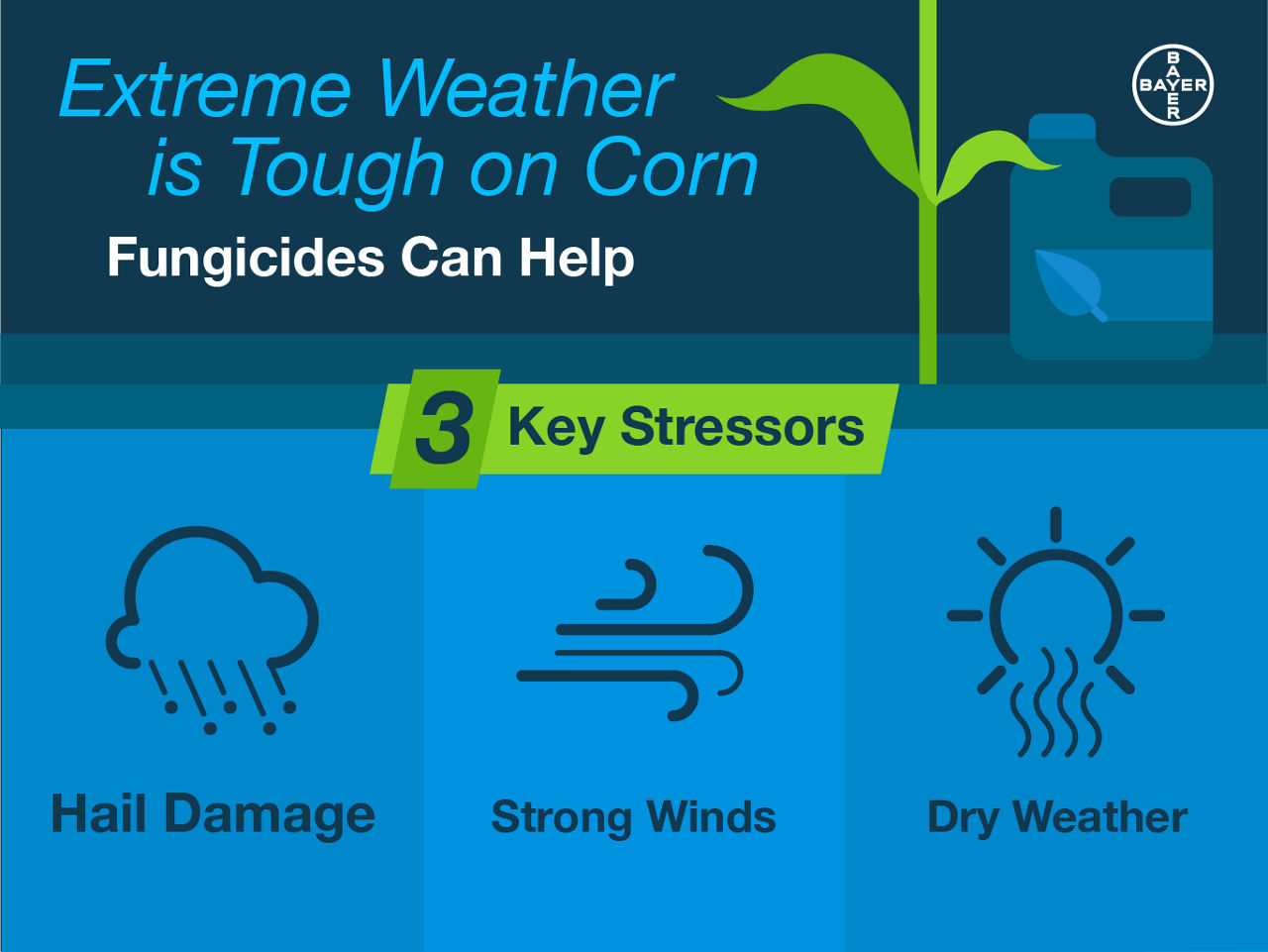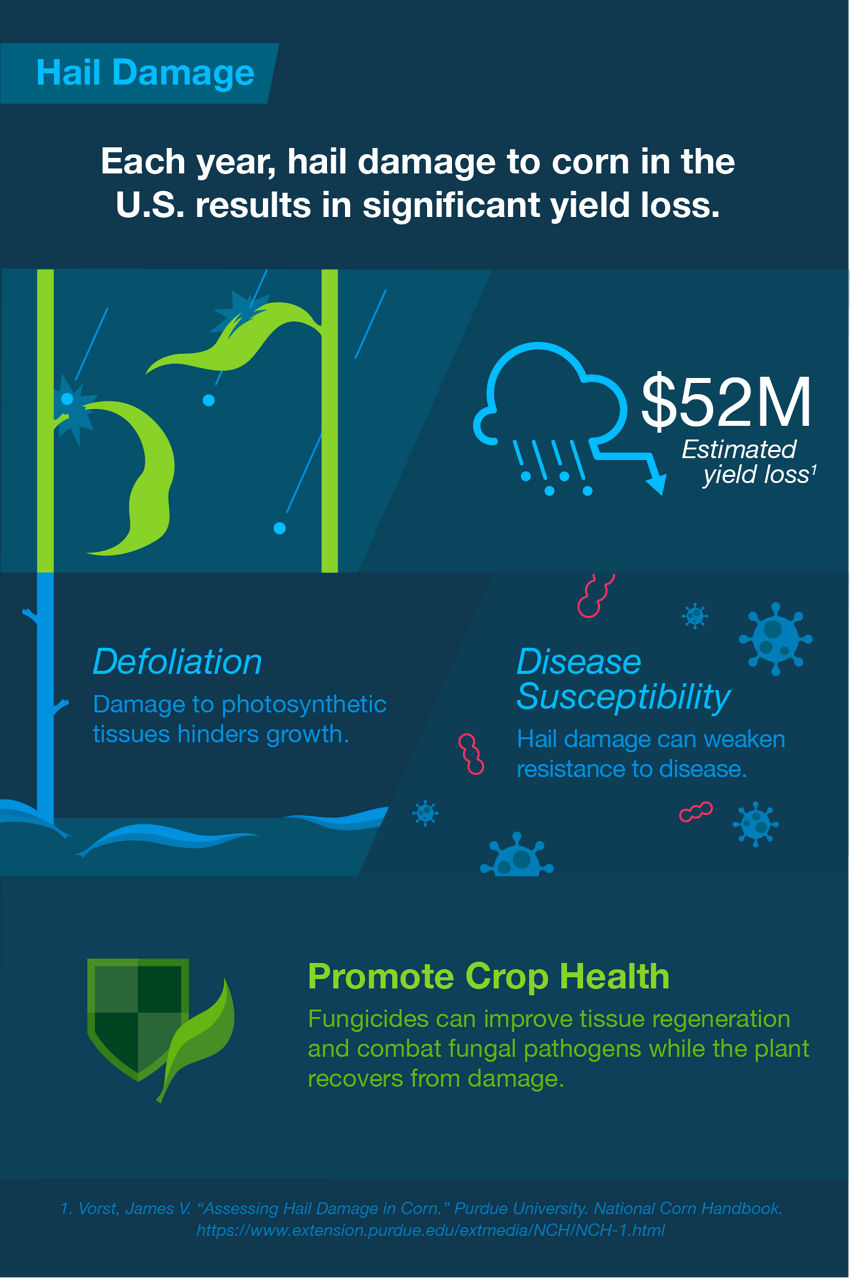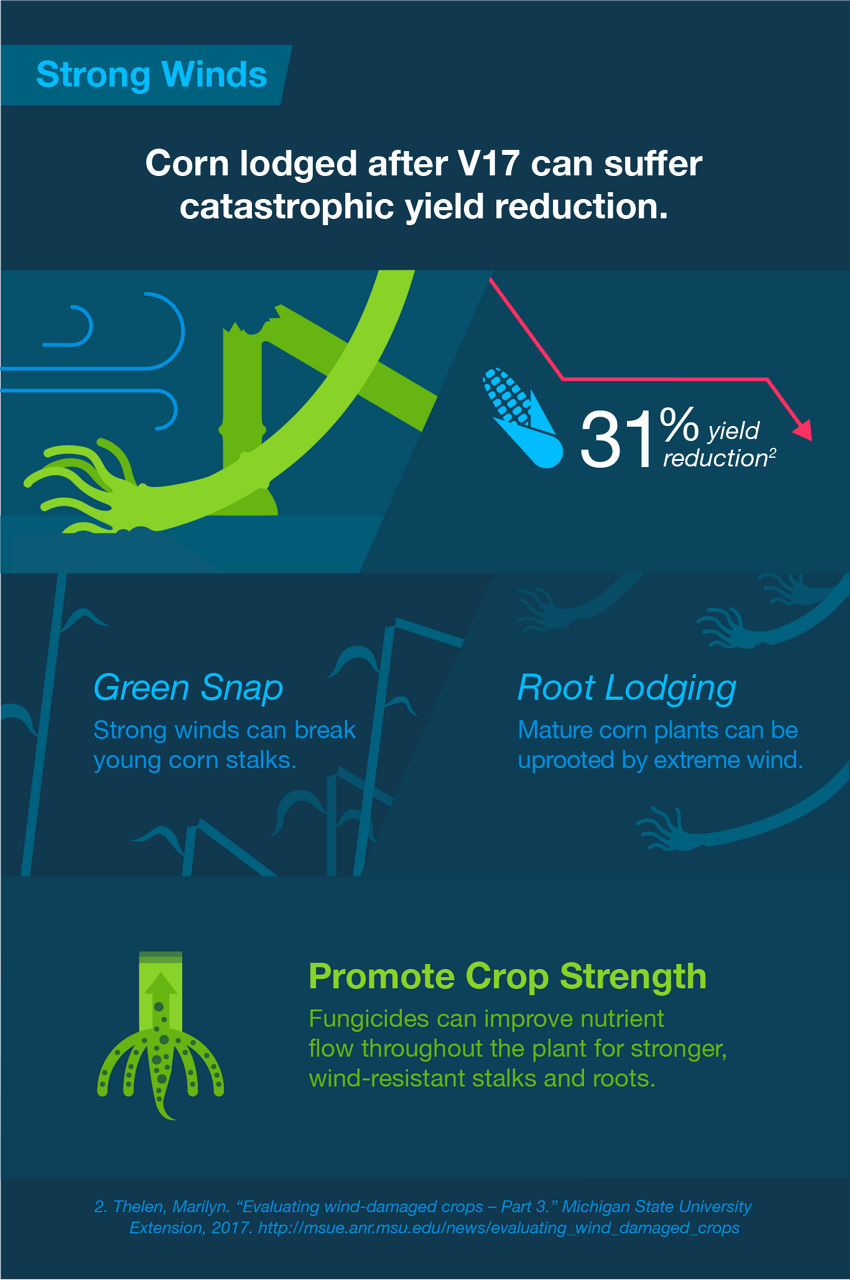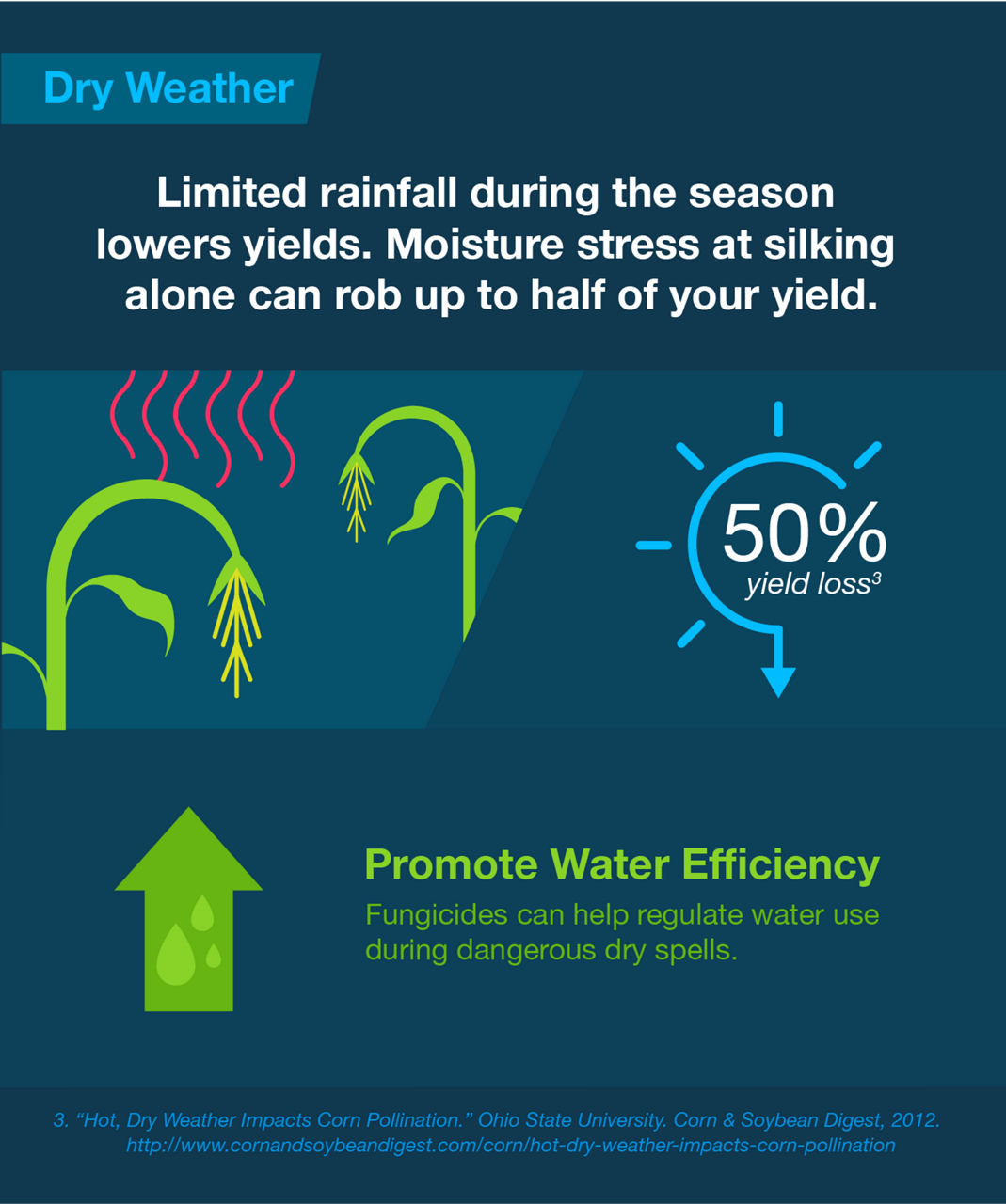Fungicides Can Protect Your Corn from Weather Stress
July 31, 2022

Fungal disease and wet weather. They seem to go together like Bonnie and Clyde – the combination might not lead to good things, but you typically don’t have one without the other.
Fungal disease in corn needs wet weather to take hold and, if untreated, negatively affects your yields. That’s when you apply a fungicide, usually at tassel, to control the disease. It’s the only time you ever need to consider applying a fungicide.
Or is it?
Independent studies increasingly show that a fungicide application can actually help corn weather (pun intended) adverse weather conditions, such as hail damage. Corn treated with a fungicide often better withstands winds that might down corn in a neighboring field. In fact, fungicides can even help your field when the weather is drier than normal.

1. Hail Damage
One of the better ways to limit the impact of hail damage is if a good fungicide is applied shortly before the hail event, Randy Myers, Ph.D., Bayer Product Development Manager, explained.
“A fungicide application before you have hail means the plant’s physiological reactions are already triggered before the leaves are damaged,” Myers said. “It means there are fewer latent infections that can take advantage of the weakened plants, since they have already been prevented or cleaned up by the chemistry.”
If a fungicide application didn’t happen prior to the hail event, you can still benefit from a fungicide application, regardless of the plant stage. Myers explained this is because a fungicide such as Delaro Complete®, Delaro®, or Stratego® YLD benefits the plant in two ways:
- The plants' hail-damaged vascular system restricts the flow of water and nutrients, starving some cells and handicapping others. Photosynthetically active surfaces may not be able to export the generated sugars to the growing and recovering tissues. The injured plant is less able to respond to infections. The fungicide helps fight fungal pathogens that readily feast on this weak tissue caused by hail damage.
- The strobilurin component of Delaro Complete, Delaro, and Stratego YLD fungicides encourages the formation of callus tissue, closing the wounds caused by hail and eliminating a pathogen’s easy access to the vulnerable interior of the leaves. This barrier preserves plant productivity, enhancing recovery.

2. Wind Damage
Fungicide application may also be able to help your corn withstand straight-line winds that might flatten your neighbor’s field. Delaro Complete promotes strong, healthy stalks for nutrient flow throughout the grain fill period and helps reduce the number of downed plants.
“An early season fungicide application (V4 to V7) is shown to improve stalk strength and reduce the risk of lodging," Myers said. "If you have a stronger stalk, the plant is less likely to fall victim to strong winds and bend over or snap off.”

3. Dry Weather
It might seem counterintuitive to apply a fungicide when it’s dry. After all, most diseases need moisture to thrive, so they certainly won’t thrive during a dry year. A common assumption by many growers is that fungicides are beneficial only in wet conditions, when disease is more likely. These growers may assume that if it’s dry, there is no value in a fungicide application.
“Common misperceptions still exist when it comes to fungicides,” Myers says. “Fungicides trigger beneficial physiological reactions in the plant, even with dry weather and in the absence of visible disease symptoms.”
One of the physiological reactions is the fact that fungicides help a corn plant improve its water efficiency when rainfall seems to be scarce.
In fact, Myers talked with a number of growers who made an early application of Stratego YLD in 2012, when there was a widespread drought, before they knew that dry weather conditions would take hold. The growers reported that fields receiving the fungicide yielded better than untreated corn.
Application Methods
Clearly, prevention is the best approach when it comes to mitigating the effects of serious weather events.
Growers can consider two approaches to preventive fungicide applications:
- Early Season The practice of early season fungicide application – between the V4 and V7 stages of corn – is becoming more common. During these stages, corn plants go through critical changes that will affect the yield potential of the field. Having to secure all of their own nutrients and plant resources for the first time, plants are susceptible to environmental stresses and diseases. Applying fungicide at this stage is not only convenient, but it also offers early season disease control and more complete plant coverage. It can also be tankmixed with a planned herbicide application.
- At-Tassel An at-tassel application of Delaro Complete, Delaro, or Stratego YLD delivers improved stalk strength with reduced risk of lodging, as well as preventive and curative activity against gray leaf spot, northern corn leaf blight and/or southern rust.
